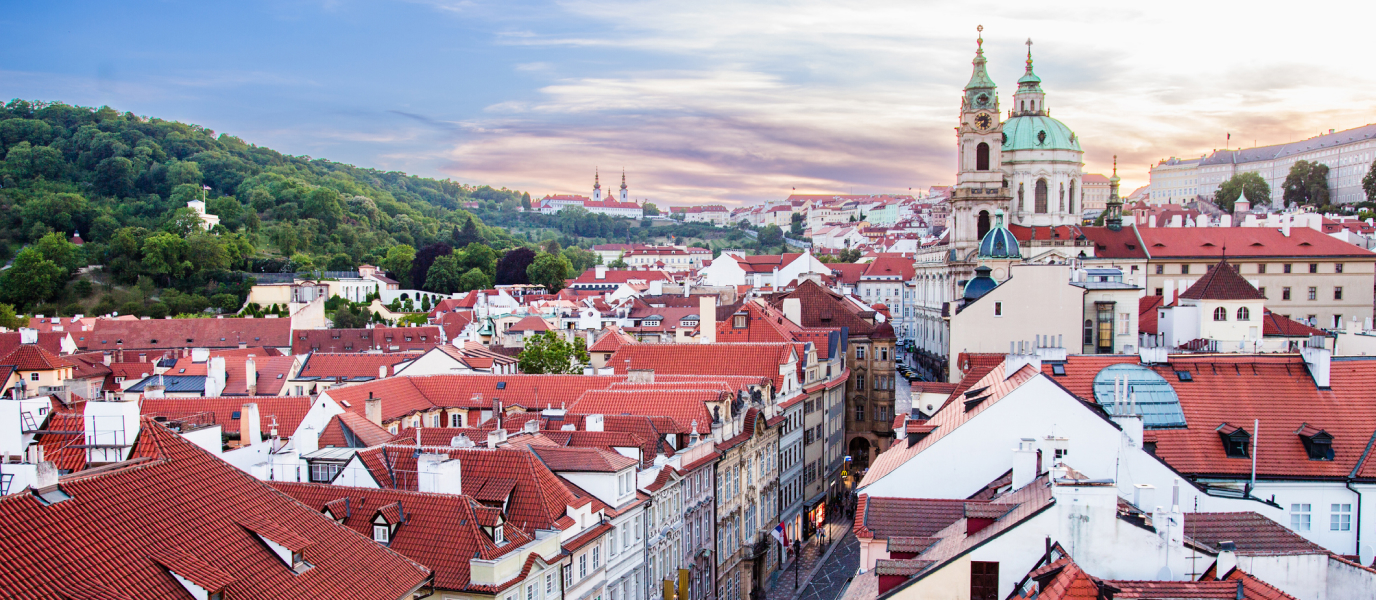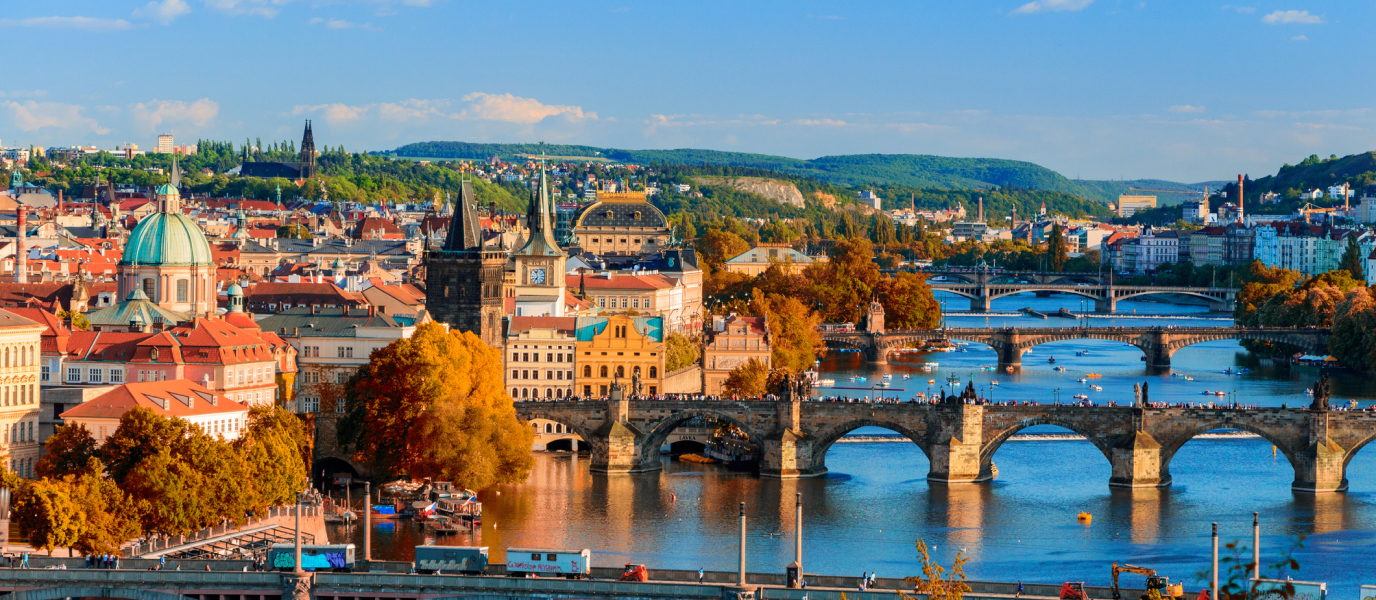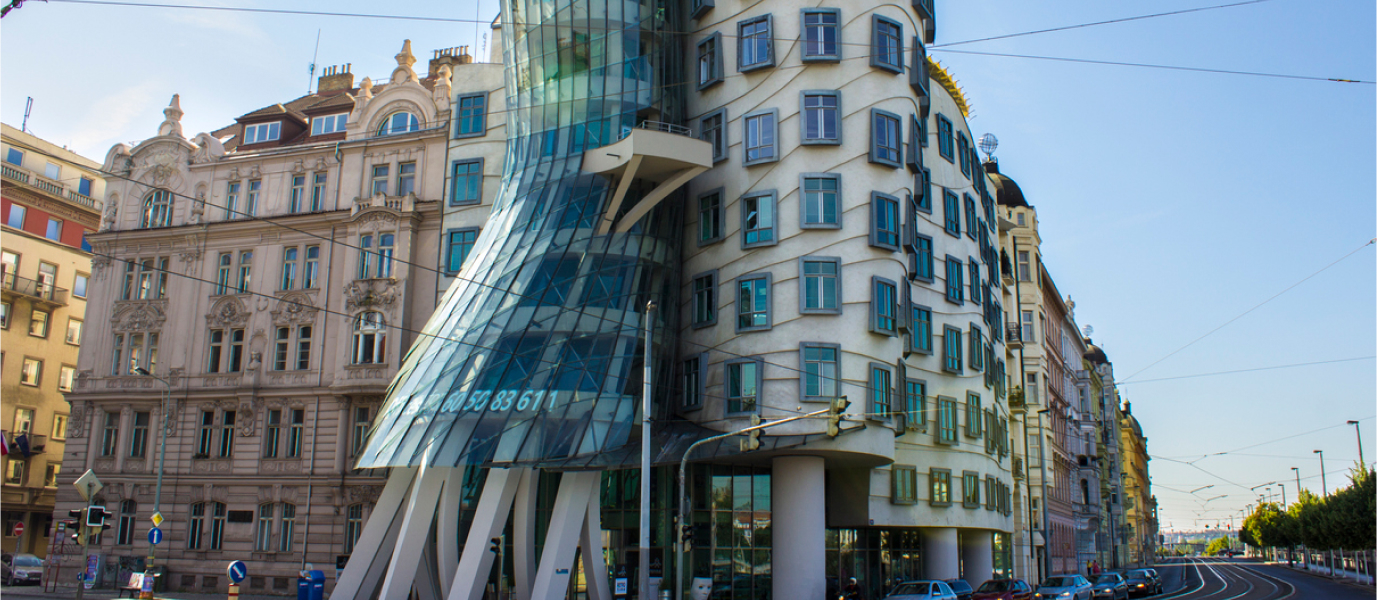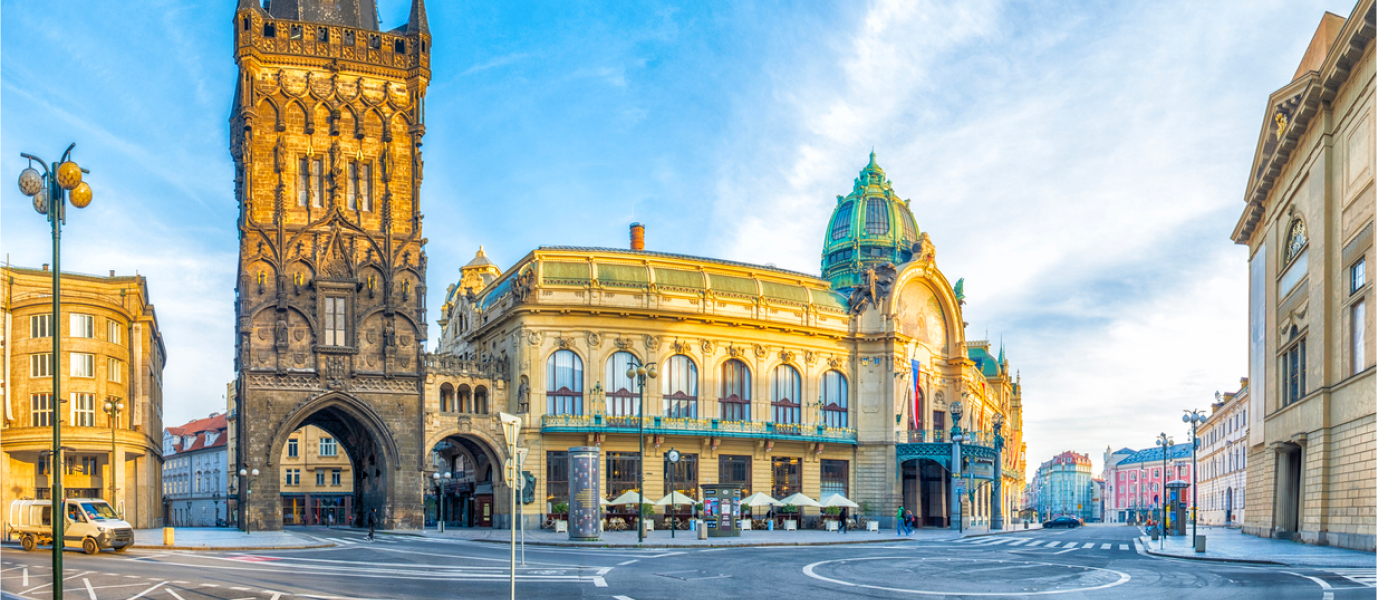The Church of St Nicholas, located in the north-western corner of Prague’s Old Town Square, is an imposing Baroque place of worship built between 1732 and 1737, during the period of the restoration of Catholicism in the Czech region after the Thirty Years’ War. Beware! This church is not to be confused with the church of the same name which stands in the nearby district of Malá Strana, and which was built during the same period, in the same style, by the same architect. Traditionally, this church has made up, along with the Old Town Hall building and the Church of Our Lady of Týn, the so-called monumental triangle of Prague’s Old Town Square. It is an iconic spot, closely identified with the famous Astronomical Clock, which attracts thousands and thousands of visitors every year.
Nowadays, the Church of St Nicholas is regarded as one of Central Europe’s most fascinating Baroque buildings. Its stately cupola, flanked by two tall towers, is merely the ante-chamber to an interior replete with pieces from the Czech Republic’s historic and artistic heritage. The church itself alternates between offering free admission during the morning, and holding classical music concerts during the early evening. In addition, each Sunday morning, the church is reserved for services held by the Hussite Church—which has been the building’s legal owner since the end of the Second World War.
History of the Church of Saint Nicholas of Prague
Strange as it may seem, the history of the Church of St Nicholas of Prague began long before its construction. It is known that as far back as the thirteenth century, the site on which it stands was dedicated to religious use, as it housed a small Romanesque-style parish church. Later, the parish church was acquired by the municipal authority, and served as a council chamber until the Old Town Hall was built in 1338. The church also accepted the preachings of Reformist thinkers such as Jan Milíč and Jan Hus, both of whom were deeply critical of the Catholic Church at that time. Later, the outbreak of the Thirty Years’ War (1618-1648)—and the subsequent Catholic victory over Czech territories—resulted in the parish church coming under the control of the Benedictine Order. Only after the church was destroyed by a fire in 1689, did the monks order the building of the Baroque church we know today.
Completed in 1737 by the German architect Dientzenhofer, the church over the next 100 years switched between its religious function and other more diverse uses, such as a granary and a general archive. Between 1871 and 1914, the church was taken over by the Russian Orthodox community, and later it was used as a military chapel during the Second World War. After the war, the Church of St Nicholas passed into the hands of its current owner, the Hussite Church.
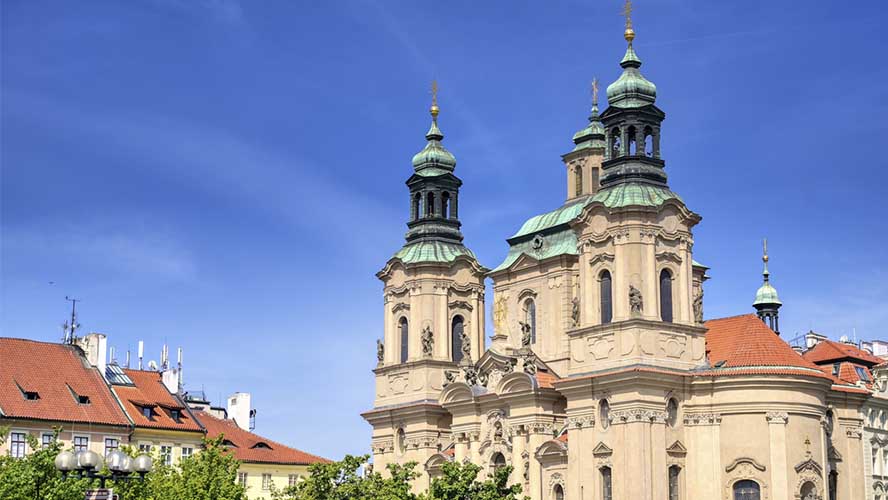
The Church of St Nicholas of Prague from Prague’s Old Town Square
Although nowadays the church’s main entrance opens onto the square itself, it is worth remembering that this was not always the case. Until the day of the Nazi bombardment that demolished the north wing of the Town Hall, the Church of St Nicholas’s original entrance was situated in a little square in part of what is now Maiselova Street. The square held a poultry market and led into the Jewish Quarter.
At any event, nowadays the main entrance to the Church of St Nicholas stands on one side of the square whose centre is dominated by a statue of Jan Hus. With its Baroque style and its vast proportions—it reaches 46 metres at its highest point—this Hussite church stands out on Prague’s skyline, thanks to its cupola and its two tall towers set off with lights. An interesting fact: until 1904, just one of the towers had a staircase, so the other tower could only be reached by means of a mobile wooden bridge suspended between the towers.
Other outstanding features of the façade of the Church of St Nicholas are the numerous statues of Benedictine saints carved in sandstone which Antonín Braun, the renowned Tyrolean sculptor, created especially for the Church between 1732 and 1737.
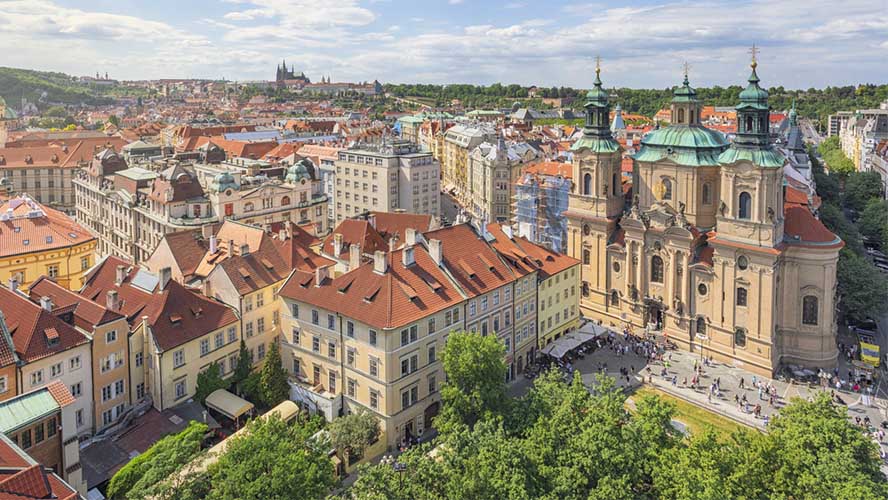
Visiting the Church of St Nicholas of Prague
It is said that for the church’s interior, the German architect Kilian Dientzenhofer drew inspiration from the palace of Les Invalides in Paris, which was famous as the final resting place of Emperor Napoleon Bonaparte I. On stepping into the church, we can immediately marvel at the cupola and the frescoes—showing scenes from the life of St Nicholas—which cover the walls. A spectacular Bohemian glass lamp, weighing 1,400 kilograms, hangs from the cupola, a gift from the Tsar of Russia to the Orthodox Church in the late nineteenth century.
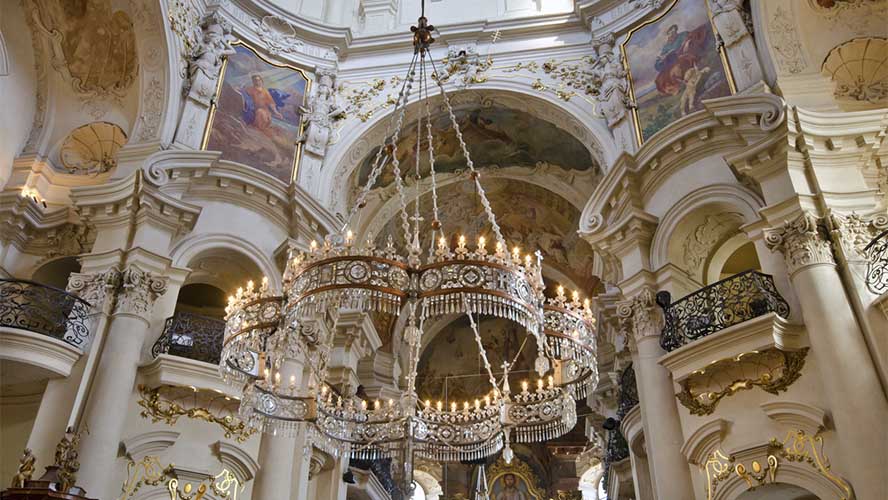
The walls are lavishly decorated with stucco murals by Bernard Spinetti, and the High Altar, which is made from artificial marble, stands imperiously at the far end of the nave. If we look carefully, we can even see that a few of the lower domes still retain fragments saved from the fire in the earlier Romanesque church.
Visitors also have the opportunity to go up into one of the towers, which offer impressive views of the historic neighbourhood of the Old Town. In addition, as was mentioned earlier, the church runs a regular programme of early-evening classical music concerts. And for those who are interested, it is worth knowing that the Hussite service every Sunday morning is open to the public.
























































